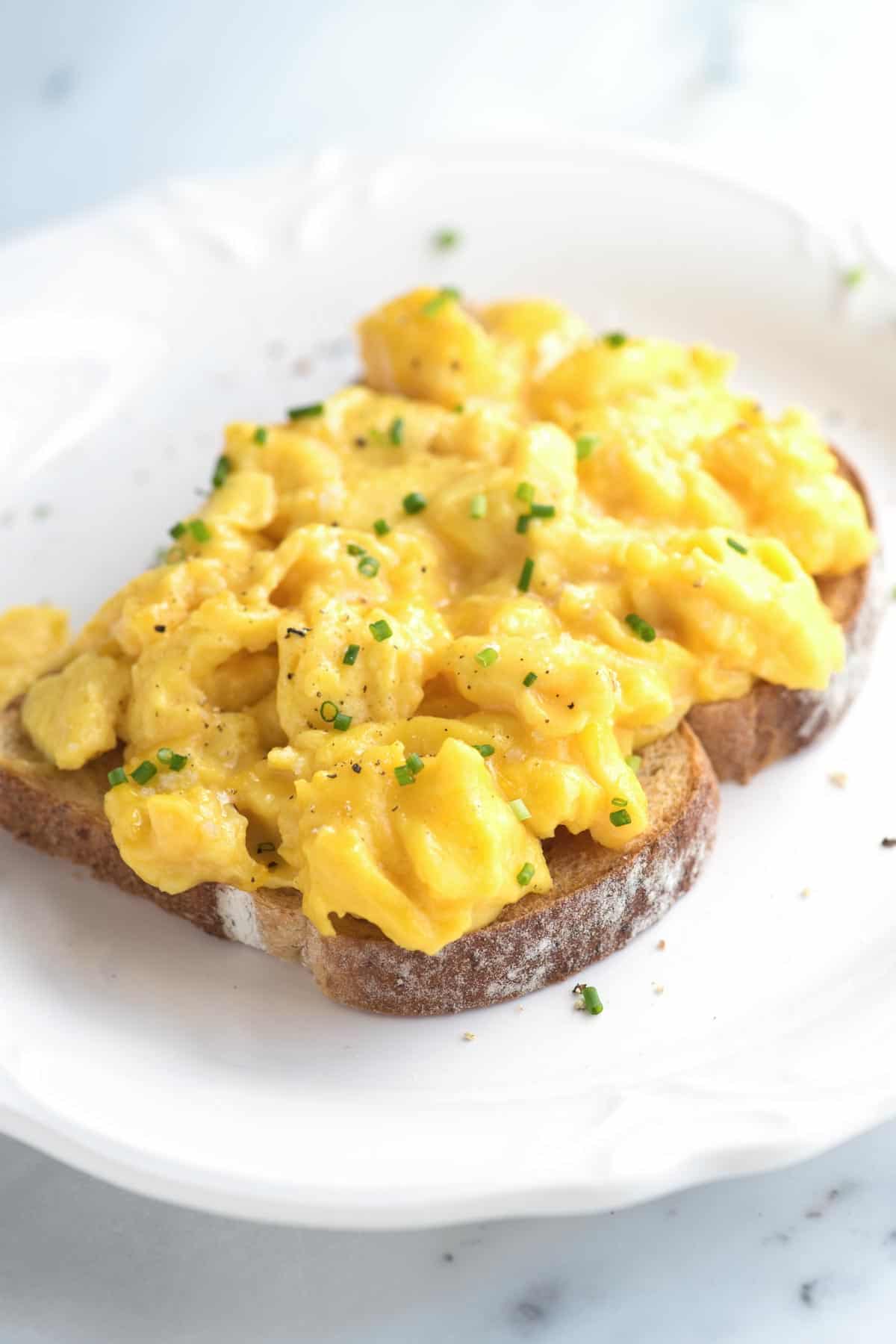How to Make Fluffy Scrambled Eggs with Butter: The Ultimate Breakfast Recipe

Imagine waking up to the tantalizing aroma of buttery eggs, their fluffy texture melting in your mouth like a cloud on a summer's day. If you're looking for the best fluffy scrambled eggs recipe with butter, you've come to the right place. This isn't just a breakfast recipe; it's an experience that will transform your mornings. So, let's dive in and master the art of making the creamiest, most delicious scrambled eggs you've ever tasted.
The Secret to Fluffy Scrambled Eggs
The key to achieving that perfect fluffy texture lies in a combination of the right ingredients, a gentle cooking technique, and a little bit of patience. Let's break it down.
Ingredients: The Foundation of Fluffiness
- Eggs: The star of the show. Use fresh, high-quality eggs for the best results.
- Butter: The magic ingredient that adds richness and depth of flavor.
- Milk or Cream: A splash of dairy helps create that creamy, velvety texture.
- Salt and Pepper: To enhance the natural flavors.
The Cooking Technique: Low and Slow
Cooking scrambled eggs is a delicate process. Rushing it can lead to dry, rubbery eggs—not the fluffy clouds we're aiming for. The key is to cook them low and slow, constantly stirring to create small, soft curds.
Step-by-Step Guide to the Best Fluffy Scrambled Eggs Recipe with Butter
Preparation: Whisking the Eggs
Start by cracking your eggs into a bowl. For every four eggs, add a tablespoon of milk or cream. Season with a pinch of salt and pepper. Whisk the mixture vigorously until it's light and frothy. This step is crucial for incorporating air, which will give your eggs that fluffy texture.
Cooking: The Art of Patience
Heat a non-stick skillet over low heat. Add a generous knob of butter—about a tablespoon for four eggs. Let the butter melt slowly, swirling it around the pan to coat the bottom evenly.
Once the butter is bubbling gently, pour in your egg mixture. Using a spatula, start stirring immediately. Keep the heat low and stir continuously, scraping the bottom and sides of the pan. This constant motion helps create those small, soft curds that make scrambled eggs so delightful.

Finishing Touches: The Perfect Consistency
The eggs are done when they're still slightly runny in places. Remember, they'll continue to cook from residual heat even after you've taken them off the stove. For the creamiest scrambled eggs, remove them from the heat just before they reach your desired consistency.
Tips and Tricks for the Perfect Scrambled Eggs
The Right Tools for the Job
A non-stick skillet and a silicone spatula are your best friends when it comes to making scrambled eggs. The non-stick surface ensures your eggs don't stick and burn, while the silicone spatula is gentle enough to create those perfect curds without breaking them up too much.
Add-Ins: Elevate Your Eggs
While the classic buttery eggs are delicious on their own, feel free to experiment with add-ins. Cheese, herbs, vegetables, or even a dash of hot sauce can take your scrambled eggs to the next level.
Serving Suggestions
Serve your fluffy scrambled eggs with butter immediately, while they're still hot and creamy. Pair them with toast, bacon, or fresh fruit for a complete breakfast experience.
/scrambled-eggs-58a701ac5f9b58a3c91cbebd.jpg)
Conclusion: Elevate Your Breakfast Game
Making the best fluffy scrambled eggs with butter is a skill that will elevate your breakfast game. With the right ingredients, a gentle cooking technique, and a bit of patience, you can create a breakfast that's not just delicious but also a joy to make. So, why not start your day with a little bit of culinary magic? Your taste buds will thank you.
FAQs
Why are my scrambled eggs watery?
- Watery scrambled eggs can result from adding too much liquid or not cooking them long enough. Make sure to add just a splash of milk or cream and cook the eggs until they're set but still creamy.
Can I make scrambled eggs ahead of time?
- Scrambled eggs are best enjoyed fresh, as they can become dry and rubbery when reheated. However, you can prep the egg mixture ahead of time and cook it just before serving.
How do I prevent my scrambled eggs from sticking to the pan?
- Using a non-stick skillet and ensuring there's enough butter in the pan will help prevent your eggs from sticking. Also, avoid cooking them over high heat.
Can I use oil instead of butter for scrambled eggs?
- While you can use oil, butter is preferred for its rich flavor and the way it helps create a creamy texture. If you must use oil, opt for a neutral-flavored one like canola or vegetable oil.
How do I know when my scrambled eggs are done?
- Scrambled eggs are done when they're set but still slightly runny in places. They'll continue to cook from residual heat, so it's best to remove them from the heat just before they reach your desired consistency.
0 Response to "How to Make Fluffy Scrambled Eggs with Butter: The Ultimate Breakfast Recipe"
Post a Comment